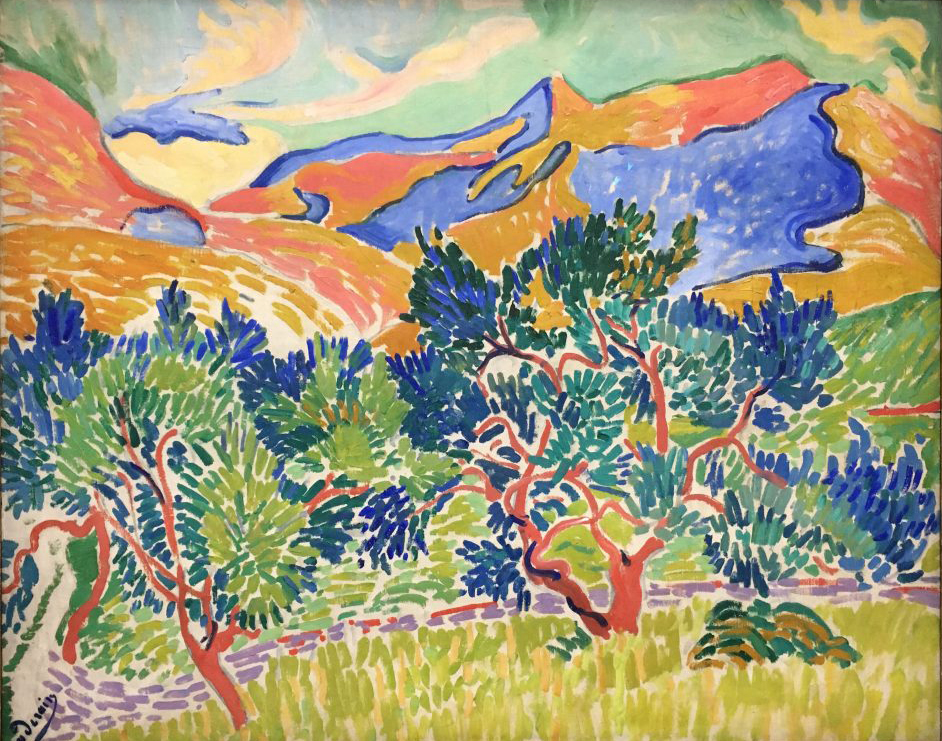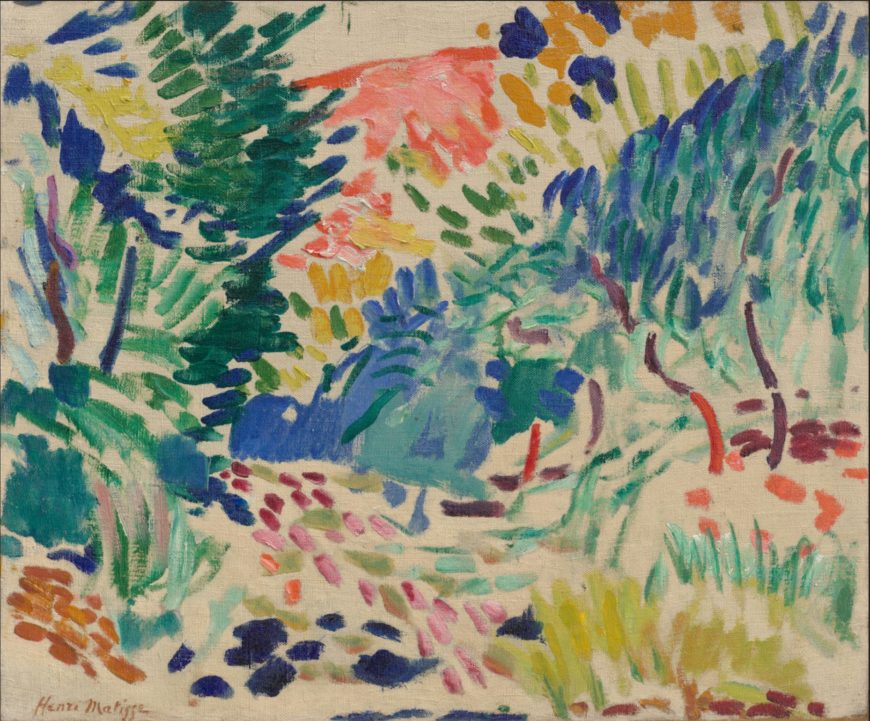Andre Derain, Fauve Landscapes and City Views

Bright color and simplified form
Varied patterns of brushstrokes define the landscape in André Derain’s Mountains at Collioure. Vivid blues and greens burst like fireworks from the twisted red branches of two trees rising up from a field of yellow-green vertical brushstrokes. A flowing horizontal line of blocky lilac strokes suggests a path or wall behind the trees, and diagonal strokes of green indicate a field rising towards the foothills. The mountains in the background are roiling forms painted in bright red, yellow, and blue under a pale green and yellow sky. Colors do not fade with distance according to the rules of atmospheric perspective. Their undiminished intensity makes the scene appear flat and decorative, just colors arranged in patterns on the surface of the canvas.
Made in the summer of 1905 when Derain was painting in the south of France with Henri Matisse, Mountains at Collioure is a quintessentially Fauve landscape with its bright, unmodulated color and simplified forms. Both painters developed styles that synthesized the work of their Post-Impressionist predecessors. Matisse had previously used a technique of regularized brushstrokes derived from the Neo-Impressionists in but abandoned this technique for the more liberated and suggestive approach of Landscape at Collioure, in which the paint is applied in loosely patterned and widely separated brushstrokes to raw canvas.

A greater degree of abstraction
Derain’s Mountains at Collioure is more carefully structured than Matisse’s contemporary landscape. Both paintings use brilliant color and visible brushstrokes to create surface patterns, but Derain distinguished foreground from background by distinct differences in paint application. The foreground trees with their thickly painted, regular patterns of leaves were depicted in the style of van Gogh, while the undulating flat colored planes of the background mountains echoed Gauguin’s abstraction of landscape forms.
Like the Post-Impressionists, Derain and Matisse intensified or even disregarded local colors in their landscapes while emphasizing surface patterns and textures. What distinguished their paintings from their predecessors and prompted an art critic to call them “Fauves” (wild beasts) was their use of more simplified color palettes, more liberated and inconsistent brushwork, and a greater degree of abstraction in both form and color.
Dr. Charles Cramer and Dr. Kim Grant, “Fauve Landscapes and City Views,” in Smarthistory, April 16, 2020, accessed March 2, 2023.

